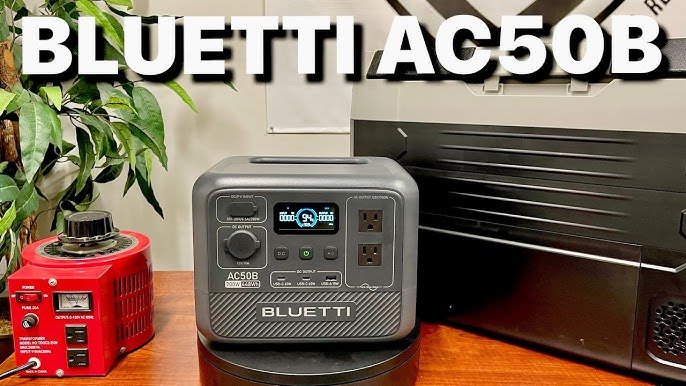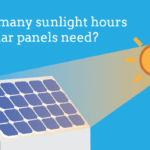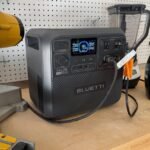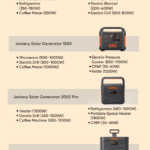Disclosure: This post contains affiliate links and I will be compensated if you make a purchase after clicking through my links. Learn More
You need a portable power station that meets your energy needs. The size depends on how much power your devices require.
Choosing the right size portable power station can be tricky. With many options available, it’s important to understand your power needs before making a decision. Are you planning a camping trip, or do you need backup power for your home?
Different activities require different amounts of power. A small power station might be perfect for charging phones and tablets. Larger units can power appliances and tools. Knowing the wattage of your devices helps you pick the right size. By assessing your needs, you can ensure your power station will keep your devices running smoothly. Ready to find the perfect portable power station for your needs? Let’s dive in!
Choosing The Right Capacity
Selecting the right portable power station size ensures your devices stay charged during trips or power outages. Consider the total wattage of your gadgets to determine capacity needs. A higher capacity suits multiple or larger devices, while a smaller one suffices for basic essentials.
Choosing the right capacity for a portable power station can feel like a puzzle. You want to make sure you have enough power to keep your devices running without going overboard. Finding that sweet spot requires a bit of thought and planning.
Assess Power Needs
Start by understanding what devices you plan to power. Think about your daily activities and which gadgets are essential. Is it just your phone and laptop, or do you have a mini-fridge for camping trips?
List these devices and note their power consumption, typically measured in watts. This information is often found on the device or its charger. Add up these numbers to get a rough estimate of your total power needs.
Don’t forget to consider how long you need each device to run. If you plan to use a laptop for 5 hours, multiply the wattage by time to get a clearer picture of your energy requirements.
Consider Device Types
Different devices have varied power demands. Small gadgets like phones need less energy, while larger equipment, such as electric grills, require more juice.
Think about which devices you need simultaneously. If you often camp with lights, a fan, and a tablet running at once, your power station should handle the combined load.
Understand that some devices might have surges in power needs. Devices like refrigerators have higher startup power demands. Check if your power station can handle these spikes without tripping.
Choosing the right portable power station capacity is about matching your lifestyle. It’s about being prepared without lugging around unnecessary power. What devices do you absolutely need, and how often will you use them? This reflection ensures you pick a power station that fits your unique needs perfectly.
Understanding Watt-hours
Understanding watt-hours helps determine the right size for a portable power station. It measures how much power the device can supply over time. Consider your energy needs and device usage to choose the appropriate capacity.
Understanding watt-hours can feel like cracking the code to the perfect portable power station. This concept is crucial if you want to make sure your devices are powered when you need them most. Let’s dive into what watt-hours mean and why they’re important for choosing the right power station for your needs.
Define Watt-hours
Watt-hours (Wh) measure the energy a device uses over time. It’s a combination of power (watts) and time (hours). Think of it like your phone’s battery life: the higher the watt-hours, the longer your power station can keep your devices running.
To put it simply, if a device uses 1 watt and operates for 1 hour, it consumes 1 watt-hour. This unit helps you understand how long your portable power station can supply energy to your devices.
Importance Of Watt-hours
Knowing the watt-hours of a power station helps you plan your adventures better. Imagine going camping and your phone dies halfway through your trip. With the right watt-hour capacity, you can ensure your devices stay charged throughout your journey.
Consider the devices you use daily. A smartphone might use around 10 watt-hours per charge, while a laptop can consume 50 watt-hours. Understanding these numbers helps you choose a power station that matches your needs.
Ask yourself: How many devices do I need to charge, and how often? This thought process ensures you won’t be left in the dark, literally and figuratively, when you’re off the grid.
Choosing a portable power station isn’t just about size or weight. It’s about understanding watt-hours and making an informed decision based on your lifestyle and needs.
Evaluating Battery Types
Choosing the right battery type for your portable power station can be confusing. To simplify your decision, it’s essential to understand the differences between lithium and lead-acid batteries. Let’s break down the pros and cons to help you decide which is best for your needs.
Lithium Vs Lead-acid
Lithium batteries are known for their efficiency and compact size. They are lighter and can store more energy compared to lead-acid batteries. This makes them ideal for portable power stations where weight and space are important.
Lead-acid batteries, on the other hand, are heavier and bulkier. However, they are often more affordable and easier to replace. They have been around for a long time, making them a reliable and trusted choice for many users.
Pros And Cons
| Battery Type | Pros | Cons |
|---|---|---|
| Lithium |
|
|
| Lead-Acid |
|
|
When I first bought my portable power station, I chose lithium because I needed something light for camping trips. However, if you are looking for a budget-friendly option for occasional use, lead-acid might be the way to go.
Have you considered how often you’ll use your power station? This can be a game-changer in your decision-making process. Frequent users might benefit more from the longevity and efficiency of lithium batteries. Less frequent users might find lead-acid batteries to be a more practical choice.
Make sure to weigh these factors carefully. Your choice of battery type can significantly impact the overall performance and convenience of your portable power station.

Credit: us.oukitel.com
Portability Considerations
Choosing the right portable power station involves more than just power capacity. Portability plays a crucial role in determining the best fit for your needs. Understanding how weight and design affect portability can make your decision easier.
Weight Factors
Weight impacts how easily you can carry your power station. Lightweight units are better for short trips or emergencies. Heavier models may offer more power but can be hard to transport. Consider how far and how often you’ll carry the power station. Balance weight with power needs for optimal portability.
Size And Design
Size determines where you can store and use your power station. Compact designs fit in small spaces, making them ideal for travel. Bulky units might need more room but often pack more features. Look for a design that complements your planned activities. Easy-to-carry handles or straps enhance portability. Also, consider the shape. Sleek designs slide into tight spots, while awkward shapes might not.
Power Output Options
Choosing the right portable power station means understanding power output options. Different devices need different power types. Power stations offer a variety of ports. This ensures your devices stay charged and ready.
Ac And Dc Ports
AC ports mimic the power from a wall outlet. They are ideal for larger devices. Think laptops, TVs, or small kitchen appliances. DC ports provide direct current. Great for car devices and certain electronics. Each port type serves distinct power needs.
Usb And Fast Charging
USB ports are essential for everyday gadgets. Smartphones, tablets, and cameras rely on them. Fast charging options make a big difference. They reduce waiting time for your devices to charge. Choose power stations with multiple USB ports. This ensures you can charge several gadgets at once.

Credit: www.nytimes.com
Safety Features To Look For
When choosing a portable power station, safety is a crucial aspect that you should never overlook. Imagine being out on a camping trip and suddenly your power station malfunctions due to a lack of safety features—it could ruin your adventure and even pose a risk to your safety. So, what safety features should you look for? Let’s dive into the essential ones that can make all the difference.
Overload Protection
Overload protection is a must-have feature in a portable power station. It ensures that the device automatically shuts off if you connect too many gadgets or if a gadget draws too much power. This prevents damage to both the power station and your devices.
Think about the times you’ve plugged too many appliances into a single outlet at home. You wouldn’t want a similar scenario while you’re outdoors. Overload protection acts as your first line of defense, keeping your gear and your trip safe.
Temperature Control
Temperature control is vital for maintaining the efficiency and safety of your power station. High temperatures can lead to overheating, potentially damaging the power station or causing it to fail entirely.
Have you ever touched a device that was too hot to handle? That’s a clear sign of poor temperature management. A portable power station with good temperature control will prevent such occurrences, ensuring the device operates safely and reliably.
Are you willing to take chances with safety when it could be easily addressed with the right features? Make sure your portable power station is equipped with overload protection and temperature control. Your peace of mind is worth it.
Budget And Cost Analysis
Deciding on the right size portable power station depends on your device needs and usage duration. Calculate the wattage of your devices and how long you’ll use them to estimate the power required. This approach ensures you choose a power station that fits your budget and energy needs efficiently.
When deciding on the size of a portable power station, understanding your budget and conducting a cost analysis is crucial. You’ll want to balance what you’re willing to spend with the features you need. It’s about getting the best value for your money without compromising on essential functions.
Price Vs Features
When evaluating different power stations, consider what features you absolutely need versus those that are nice to have. A basic model might be more affordable, but does it have enough outlets or the battery capacity you require?
Think about your specific use cases. If you’re camping, you might not need a model with a built-in flashlight or wireless charging, but those could be useful for emergencies.
It’s tempting to go for the cheapest option, but will it meet your power needs in the long run? Sometimes spending a little more upfront saves you from having to upgrade sooner than expected.
Long-term Investment
Consider your portable power station as a long-term investment. A slightly higher initial cost might result in savings over time if the device is more efficient or durable.
Think about how often you’ll use it. If you anticipate frequent use, investing in a more reliable, robust model makes sense. You’ll avoid potential issues like frequent recharges or replacements.
Reflect on your lifestyle and future needs. Are you planning more outdoor adventures, or is it just for occasional use? Ensuring your power station is future-proof can enhance its value significantly.
Ultimately, understanding your budget and analyzing costs can lead you to a portable power station that fits your needs perfectly. What features can you not live without, and which ones are just extras? By answering these questions, you’ll make a wise investment that serves you well over time.
Expert Recommendations
Choosing the right size for a portable power station can be challenging. Experts provide recommendations based on usage needs and specific scenarios. A smaller unit is sufficient for camping or short trips. Larger models are ideal for extended outdoor adventures or emergencies. Consider how often you’ll use it and the types of devices you’ll charge. This helps in making a well-informed decision.
Top Brands
Renowned brands offer reliable portable power stations with varied sizes. Goal Zero provides versatile options suitable for different power needs. Jackery stands out for its user-friendly designs and dependable performance. EcoFlow offers innovative technology with rapid charging features. These brands focus on quality and durability, ensuring long-lasting use.
Best Models For Beginners
Beginners should start with models that are simple to operate. Jackery Explorer 240 is compact and easy to use. It’s perfect for charging small devices and lights. Goal Zero Yeti 200X is also ideal for newcomers. It supports various gadgets with ease. Both models are lightweight and portable. They are great for short trips or occasional use.

Credit: naturesgenerator.com
Frequently Asked Questions
What Size Portable Power Station Should I Get?
Choose a portable power station based on your device’s wattage requirements. For small devices, 200-300Wh is ideal. Larger appliances need 500Wh or more. Consider battery capacity, output ports, and weight for convenience. Assess your power needs carefully to ensure sufficient backup during outages or outdoor activities.
What Is A Good Size Portable Power Bank?
A good size for a portable power bank is 10,000mAh. It provides multiple charges for most smartphones and is easy to carry.
What Can A 300w Portable Power Station Run?
A 300W portable power station can run small devices like smartphones, laptops, cameras, lights, fans, and mini fridges.
What Can A 500 Watt Power Station Run?
A 500-watt power station can run small appliances like a mini-fridge, LED lights, laptops, and smartphones. It can also power small fans, CPAP machines, and charge tablets. High-power appliances like microwaves or heaters are not suitable. Always check the device’s wattage before connecting.
Final Words
Choosing the right portable power station is crucial. Consider your power needs carefully. Think about what devices you’ll charge. Larger stations support more devices, but weigh more. Smaller ones are portable but may limit usage. Balance portability and capacity based on your lifestyle.
Remember to check the watt-hour rating. This helps estimate how long devices will run. Look for reliable brands with good reviews. Investing in quality ensures safety and durability. Your ideal power station fits your unique requirements. Make an informed choice for peace of mind and convenience.








